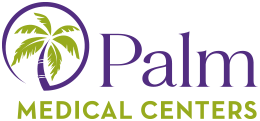Coronary Artery Disease (CAD) - Clogging of Heart Arteries
Introduction
Anatomy

Causes

Symptoms
Diagnosis
- An electrocardiogram (ECG) is used to record the heart’s electrical activity. An ECG may be repeated over several hours.
- An exercise stress test, also called a cardiac stress test or treadmill test, involves monitoring your ECG and blood pressure while you walk on a treadmill.
- An echocardiogram uses sound waves to produce an image on a monitor and can also be used to perform a stress test.
- Nuclear ventriculography (MUGA or RNV) involves using a safe radioisotope injection to produce an image of the heart with special scanners. Electron-beam computed tomography (EBCT) evaluates how much calcium is in the plaque in the arteries.
- A coronary angiography uses a dye and X-rays to show an image of the heart.
Treatment
Prevention
Am I at Risk
Risk factors may increase your likelihood of developing CAD, although some people that develop the condition do not have any risk factors.
Risk factors for CAD:
_____ Family history of CAD
_____ Men over the age of 45 and women over the age of 55
_____ Cigarette smoking
_____ Obesity
_____ High blood sugar levels from diabetes
_____ High blood pressure
_____ High cholesterol
_____ People that are physically inactive
_____ Higher than normal inflammation markers found by blood testing
Complications

Copyright © - iHealthSpot Interactive - www.iHealthSpot.com
This information is intended for educational and informational purposes only. It should not be used in place of an individual consultation or examination or replace the advice of your health care professional and should not be relied upon to determine diagnosis or course of treatment.
The iHealthSpot patient education library was written collaboratively by the iHealthSpot editorial team which includes Senior Medical Authors Dr. Mary Car-Blanchard, OTD/OTR/L and Valerie K. Clark, and the following editorial advisors: Steve Meadows, MD, Ernie F. Soto, DDS, Ronald J. Glatzer, MD, Jonathan Rosenberg, MD, Christopher M. Nolte, MD, David Applebaum, MD, Jonathan M. Tarrash, MD, and Paula Soto, RN/BSN. This content complies with the HONcode standard for trustworthy health information. The library commenced development on September 1, 2005 with the latest update/addition on February 16, 2022. For information on iHealthSpot’s other services including medical website design, visit www.iHealthSpot.com.






